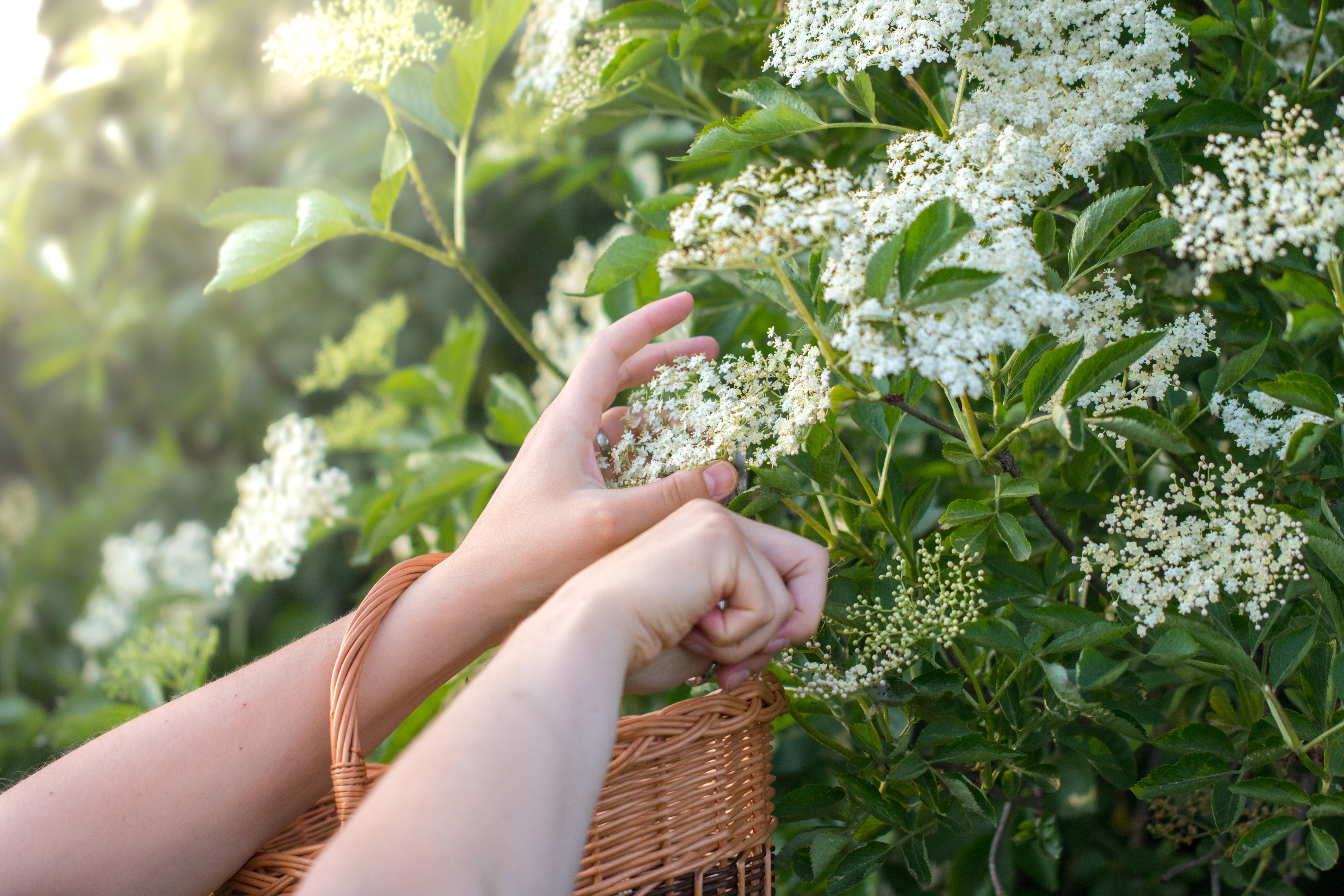Blog
Foraging 101: How to Eat Truly Local

By Jason Neumann, Public Programs Manager
It’s June and the larger-than-your-face, white umbrella-shaped blooms of American elderberry (Sambucus canadensis) burst from the greenery, seemingly out of nowhere. Elderflowers are a seasonal joy, keeping me in touch with tradition. I have no doubt my own English and German ancestors made use of the flowers of European black elderberry (Sambucus nigra). I still make “summer in a bottle” elderflower cordial, elderflower fritters, dry the blooms for elderflower tea, and more.
Foraging (collecting wild or uncultivated food for free) is back in fashion. On its surface, foraging is a hyper-local celebration of native food. More deeply, foraging is about humans’ relationship to the natural world, forcing us to slow down and really look at the nature around us. Gathering wild foods also pushes us to learn some key principles to keep us safe:
Right plant – Misidentifying a plant you’re going to eat can make for a lousy choose your own adventure. Returning to elderflowers, there’s another roadside plant that also bears large, white umbrella-shaped flowers—poison hemlock (Conium maculatum), which can be fatal even in small amounts. Always confirm plant identification through multiple reputable sources.
Right time – We want to harvest the part the plant is putting its energy into. For elderflowers, we harvest just after the morning dew has dried, when there’s fresh nectar and pollen on the blooms. Prime elderflowers will be covered with insects—we gently shake the insects off.
Right part – With elder, we remove the little flowers from the “umbrella,” discarding the green twigs of the frame. The stems and leaves of elder plants contain pre-cyanide compounds that will turn into cyanide if eaten.
Right place – Sometimes, habitat can help with plant identification. But, more importantly, we need to be aware of soil or water contamination. Some plants can take up contaminants as they grow. Avoid foraging in industrial areas and roadsides.
On a deep level, foraging speaks to sustainability. We never want to harvest rare plants or those with limited populations. There are lots of super common edible “weeds” or even edible invasive plants around, so there’s no need to harvest anything rare. You should only harvest what you can use in a day or two and in such a way that your foraging activity improves the land. Always ask permission before foraging, especially in parks.
Want to learn more about foraging? While we do not allow public foraging on Cincinnati Nature Center sites, we do offer a number of foraging-related classes and experiences. For more information, click here to learn more about our edible plant and foraging group.